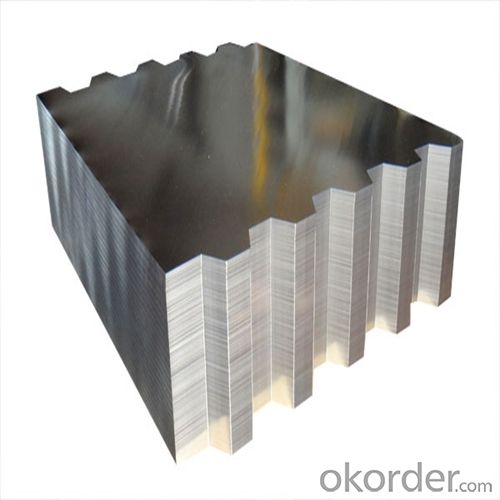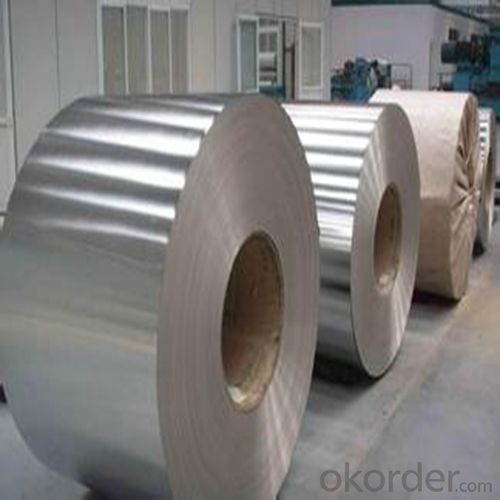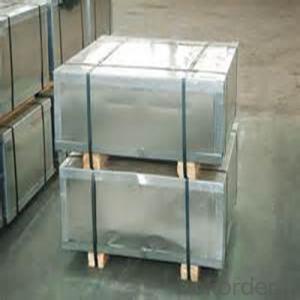Electrolytic Tinplate and TFS for Metal Containers Use 0.26mm Thickness
- Loading Port:
- Shanghai
- Payment Terms:
- TT OR LC
- Min Order Qty:
- 50 m.t.
- Supply Capability:
- 25000 m.t./month
OKorder Service Pledge
OKorder Financial Service
You Might Also Like
Item specifice
1.Structure of Electrolytic Tinplate and TFS for Metal Containers Use 0.26mm Thickness Description
Also known as chromed steel, tin-free steel (TFS) is obtained by coating the metal base (low-carbon steel) with an ultra-thin layer of metallic chrome and then with a chromium oxide layer.
The product complies with ASTM A-657 Specification and is manufactured with low current density (TFS-III) and is supplied in coils (up to 12 metric tons)or sheets.
2.Main Features of the Electrolytic Tinplate and TFS for Metal Containers Use 0.26mm Thickness
Appearance – Tinplate is characterized by its beautiful metallic luster. Products with various kinds of surface roughness are produced by selecting the surface finish of the substrate steel sheet.
Formability and strength – Tinplates have got very good formability and strength. By selecting a proper temper grade, appropriate formability is obtained for different applications as well as the required strength after forming.
Solderability and weldability – Tinplates can be joined both by soldering or welding. These properties of tinplate are used for making various types of cans.
Safe – Tinplate being low weight and high strength makes food cans easy to ship and transport.
Eco friendly – Tinplate offers 100 % recyclability.
3.Electrolytic Tinplate and TFS for Metal Containers Use 0.26mm Thickness Images



4.Electrolytic Tinplate and TFS for Metal Containers Use 0.26mm Thickness Specification
Specification of :
Standard: ISO 11949 -1995, GB/T2520-2000,JIS G3303,ASTM A623, BS EN 10202
Material: MR,SPCC
Thickness:0.15mm - 0.50mm
Width: 600mm -1150mm
Temper: T1-T5
Annealing: BA & CA
Coil Inner Diameter: 508mm
Weight: 6-10 tons/coil 1~1.7 tons/sheets bundle
Passivation:311
Oil: DOS
Surface: Finish,bright,stone,matte,silver
5.FAQ of Electrolytic Tinplate and TFS for Metal Containers Use 0.26mm Thickness
- How are the tinplates specified?
The tinplates are specified as per the steel base, extent of tempering, the coating weight, annealing method and the surface finish.
- How many types there are for base steels?
The base steels are of three types: Type MR, L, D
- Q:Can tinplate be recycled with other metals?
- Yes, tinplate can be recycled with other metals. Tinplate is typically made from steel coated with a thin layer of tin, and both steel and tin can be recycled. When tinplate is recycled, it is usually separated from other materials and processed separately to recover the steel and tin content.
- Q:What are the main challenges in the tinplate industry?
- The main challenges in the tinplate industry include fluctuating raw material prices, increasing competition, sustainability concerns, and maintaining product quality and innovation. Additionally, the industry also faces challenges related to supply chain management, regulatory compliance, and meeting changing customer demands and preferences.
- Q:What are the potential health risks associated with tinplate?
- Tinplate, which is a thin sheet of steel coated with a layer of tin, poses few direct health risks. However, if the tin coating gets damaged, it can potentially lead to the release of tin into food or beverages, which may have negative health effects. Prolonged exposure to high levels of tin can cause stomach and intestinal issues, such as nausea, vomiting, and diarrhea. It may also affect the liver, kidneys, and nervous system. While the chances of significant health risks from tinplate are relatively low, it is important to handle and store tin-coated products properly to minimize any potential health concerns.
- Q:What are the different coating options for tinplate?
- Some of the different coating options for tinplate include electrolytic tin coating, chrome oxide coating, lacquer coating, and organic coatings such as epoxy or polyester.
- Q:What is the tensile strength of tinplate?
- The tensile strength of tinplate typically ranges from 28,000 to 40,000 pounds per square inch (psi), depending on the specific grade and thickness of the tinplate.
- Q:What are the main challenges in tinplate storage and transportation?
- The main challenges in tinplate storage and transportation include ensuring proper handling to prevent damage or deformation, minimizing corrosion risks, managing space constraints efficiently, and maintaining temperature and humidity control to preserve the quality of the tinplate. Additionally, careful planning and coordination are necessary to ensure timely delivery and minimize bottlenecks in the supply chain.
- Q:0.25mm which melting point is low in tin plate and tin plate?
- Zinc plating on the surface of thin steel plates and steel strips by continuous hot dip plating prevents corrosion of the surface of thin steel plates and steel strips. Galvanized steel sheet and steel strip are widely used in machinery, light industry, construction, transportation, chemical industry, post and telecommunications and other industries
- Q:Can tinplate be used for automotive applications?
- Yes, tinplate can be used for automotive applications. Tinplate is a type of steel coated with a thin layer of tin, which provides it with excellent corrosion resistance. This makes it suitable for various automotive components, such as fuel tanks, panels, and trim. Additionally, tinplate is easily formable, weldable, and has good strength, making it a favorable material for automobile manufacturing.
- Q:Can tinplate be used as a water tower? Is hot water durable?
- Tinplate is commonly known as tin plated thin steel plate. It is a cold-rolled low carbon steel sheet or strip coated with pure tin on both sides. Tin plays a major role in preventing corrosion and rusting.
- Q:What industries use tinplate packaging?
- Tinplate packaging is commonly used in various industries such as food and beverage, cosmetics, pharmaceuticals, and industrial products.
1. Manufacturer Overview |
|
|---|---|
| Location | |
| Year Established | |
| Annual Output Value | |
| Main Markets | |
| Company Certifications | |
2. Manufacturer Certificates |
|
|---|---|
| a) Certification Name | |
| Range | |
| Reference | |
| Validity Period | |
3. Manufacturer Capability |
|
|---|---|
| a)Trade Capacity | |
| Nearest Port | |
| Export Percentage | |
| No.of Employees in Trade Department | |
| Language Spoken: | |
| b)Factory Information | |
| Factory Size: | |
| No. of Production Lines | |
| Contract Manufacturing | |
| Product Price Range | |
Send your message to us
Electrolytic Tinplate and TFS for Metal Containers Use 0.26mm Thickness
- Loading Port:
- Shanghai
- Payment Terms:
- TT OR LC
- Min Order Qty:
- 50 m.t.
- Supply Capability:
- 25000 m.t./month
OKorder Service Pledge
OKorder Financial Service
Similar products
New products
Hot products
Hot Searches
Related keywords

























